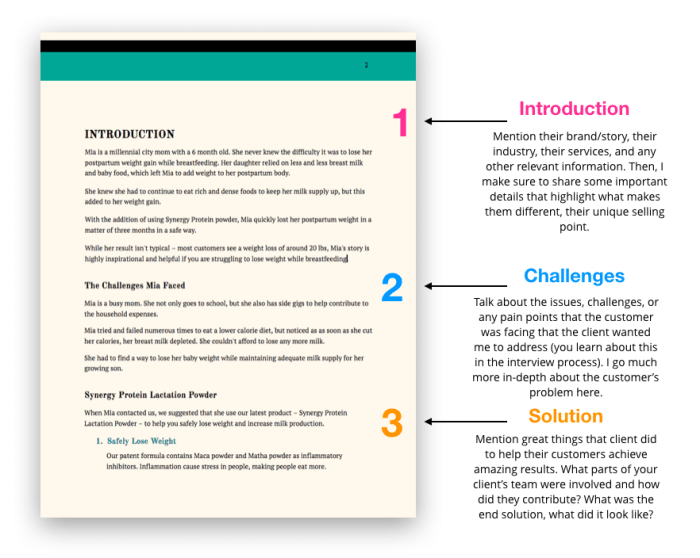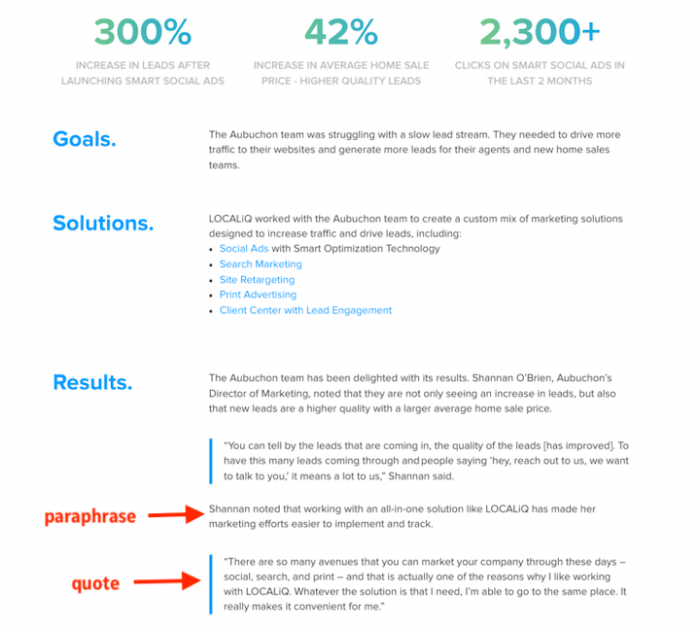Writing Case Studies sets the stage for this enthralling narrative, offering readers a glimpse into a story that is rich in detail with American high school hip style and brimming with originality from the outset.
Dive into the world of case studies where facts, data, and storytelling converge to create persuasive arguments and compelling narratives.
Introduction to Writing Case Studies
A case study is a detailed analysis of a particular subject, such as a person, group, event, or organization, conducted to draw conclusions or solutions to a problem. It involves thorough research, data collection, and analysis to provide a comprehensive understanding of the subject matter.
Writing case studies is crucial in various fields such as business, academia, and research as they offer valuable insights, practical solutions, and real-life examples to support theories or concepts. They help in showcasing success stories, best practices, and lessons learned from different scenarios.
Examples of Industries or Scenarios Utilizing Case Studies
- Business: Case studies are commonly used in marketing to demonstrate the effectiveness of a product or service, in management to analyze business strategies, and in finance to evaluate investment decisions.
- Academia: Case studies are widely used in educational institutions to help students apply theoretical knowledge in practical situations, analyze complex problems, and enhance critical thinking skills.
- Research: Case studies play a significant role in research studies to investigate specific phenomena, explore unique cases, and provide in-depth insights for further analysis or experimentation.
Components of a Case Study

When creating a well-structured case study, it is important to include key components that provide a comprehensive view of the subject matter. These components help organize the information and guide the reader through the analysis.
Problem Statement
The problem statement sets the stage for the case study by clearly defining the issue or challenge that needs to be addressed. It Artikels the context and significance of the problem, helping readers understand why the study is important.
- Example: In a case study about a marketing campaign, the problem statement could focus on low conversion rates and the need to increase customer engagement.
Methodology
The methodology section describes the approach taken to investigate the problem and gather data. It includes details on research methods, data collection techniques, and analysis procedures. This section ensures transparency and replicability of the study.
- Example: For a case study on customer satisfaction, the methodology may involve surveys, interviews, and data analysis to measure and analyze customer feedback.
Results
The results section presents the findings of the study based on the data collected and analyzed. It provides evidence to support claims made in the case study and helps readers understand the implications of the research.
- Example: A case study on product development may present results showing increased sales and customer satisfaction after implementing new features based on customer feedback.
Conclusions
The conclusions section summarizes the key takeaways from the case study and offers insights into the implications of the findings. It ties back to the problem statement and highlights the significance of the study’s results.
- Example: Conclusions from a case study on market expansion could include recommendations for targeting new demographics based on the analysis of consumer behavior and market trends.
Steps to Writing an Effective Case Study
Crafting a compelling case study requires a systematic approach to ensure that the content is engaging and resonates with the target audience. Here is a step-by-step guide on how to create an effective case study from start to finish.
Conduct Thorough Research
Before you begin writing your case study, it is crucial to conduct thorough research on the subject matter. This includes gathering relevant data, statistics, and other information that will support your case study. Make sure to use credible sources and verify the accuracy of the information you include.
Organize Information Effectively
Once you have gathered all the necessary information, it is essential to organize it in a clear and logical manner. Create an Artikel that Artikels the key points you want to cover in your case study. This will help ensure that your content flows smoothly and is easy to follow for the reader.
Present Data Clearly
When presenting data in your case study, make sure to use visuals such as charts, graphs, and tables to enhance the readability of the information. Visual aids can help clarify complex data and make it more digestible for the audience. Additionally, use clear and concise language to explain the data to ensure that it is easily understood.
Engage Your Audience
To create an engaging case study, it is important to consider your target audience and tailor your content to resonate with them. Use real-life examples, compelling storytelling, and relevant case studies to capture the interest of your readers. Make sure to highlight the key takeaways and lessons learned from the case study to make it impactful and memorable.
Formatting and Structure
When it comes to formatting case studies, there are various styles commonly used such as APA (American Psychological Association) and MLA (Modern Language Association). These styles dictate how the paper should be structured, including citations, references, and overall layout.
Different Formatting Styles
APA style is often used in social sciences and education, while MLA is more common in humanities and liberal arts. Both styles have specific rules for citing sources, formatting headings, and organizing the content. It’s important to follow the guidelines of the chosen style to maintain consistency and professionalism in the case study.
- APA style requires a title page, abstract, introduction, method, results, discussion, and references sections.
- MLA style typically includes a header with the student’s last name and page number, as well as a Works Cited page for references.
Structuring the Content
Structuring the content of a case study is crucial for presenting information in a clear and organized manner. Use headings and subheadings to divide the sections and guide the reader through the case study. Bullet points can be helpful for listing key points or data in a concise format.
- Start with an introduction that Artikels the purpose of the case study and provides background information.
- Use descriptive headings for each section to indicate the topic or focus of that part of the case study.
- Include subheadings under main headings to further break down the content into manageable sections.
- Utilize bullet points to highlight key findings, statistics, or important details within the case study.
Maintaining a Cohesive Narrative
To ensure a cohesive narrative throughout the case study, it’s essential to connect each section logically and transition smoothly between ideas. Use transition words and phrases to guide the reader from one point to the next, creating a seamless flow of information.
For example, phrases like “In addition,” “Moreover,” or “On the other hand” can help link ideas and maintain coherence.
Incorporating Data and Statistics

Data and statistics play a crucial role in strengthening the credibility of a case study. By providing concrete evidence to support claims and conclusions, data adds depth and validity to the narrative presented. Let’s delve into the significance of incorporating data and statistics effectively in a case study.
Methods for Collecting, Analyzing, and Presenting Data
When it comes to collecting data for a case study, researchers can utilize various methods such as surveys, interviews, observations, and existing databases. It is essential to ensure that the data collected is relevant, accurate, and reliable to maintain the integrity of the study. Once the data is gathered, thorough analysis is necessary to identify patterns, correlations, and trends that can strengthen the case study’s arguments.
Finally, presenting the data in a clear and organized manner through tables, graphs, and charts can enhance the reader’s understanding and make the information more digestible.
Data Visualization for Enhanced Impact, Writing Case Studies
Data visualization is a powerful tool that can significantly enhance the readability and impact of a case study. By presenting complex data in a visual format, such as infographics or interactive charts, researchers can effectively communicate key findings and insights to the audience. Visual representations not only make the data more engaging but also help in highlighting important trends and comparisons.
For example, a bar graph showing the increase in sales over time or a pie chart illustrating the distribution of survey responses can make the information more compelling and easier to interpret.
